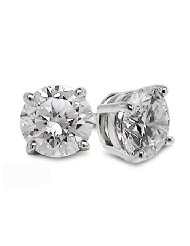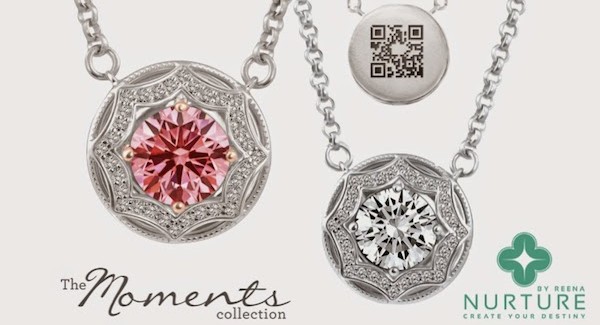As promised, here is the second part of our little chat with Edahn Golan. So Today’s Specials are: lab-grown diamonds, marketing, transparency and dialogue with consumers.
Hope you’ll like it as much as we indulged ourselves.
– So let’s start with laboratory grown diamonds. In your opinion, other than the problem of fraud that consists of deliberately mixing them with melee, has the industry acknowledged their presence and their value? Is there a market, no matter how small, for this type of diamond?
Lab-grown diamonds are an interesting concept, among other things because of the industry’s reaction and attitude towards it. Perhaps to the diamond industry’s dismay, there is a market for gem-quality lab-grown diamonds.

In the US, there is a very popular low price point range where lab-grown can fit in perfectly. We are talking about jewelry that costs under $100. Just to put this in perspective, the top three selling jewelry items sold by Amazon this past holiday season were all priced under $30. Among the top 20 items are two diamond jewelry pieces, both priced under $50. For Black Friday, Amazon’s top jewelry special was 14K gold, 0.025 carats pique goods, I1 and I2 diamond stud earrings. If you look at the size, color and clarity of the diamonds in these items, you will find that they are low cost. There are of course more diamond jewelry items as we increase the price point, for example $250 and below. Still, many of the diamonds are HIJ color, I1, 2 and 3 clarity. This is the lower end of diamond quality.
Now consider lab-grown for a minute as a technological driven product. As with any technology, two things tend to happen with them: quality of product improves and cost of production – and with it consumer price – comes down. Lab-made already cost 20%-30% less than natural diamonds. This means that in the not far distant future, mass retailers such as Amazon may decide to continue to offer diamond jewelry for $250 and less, but replace the HIJ/I-3 natural diamonds with a lab-grown that has less inclusions, but costs less than the natural diamonds they are using today and by that increase their margins. That is not a farfetched idea at all.
The result of such a process would be that lab-grown have the ability to gain market share in the lower-end of the scale.
– What about the higher-end, is there a threat to natural diamonds from-lab grown in higher price points?
We considered lab-grown as a technologically driven item, but we must remember that while true, the resemblance is limited in scope. Unlike other technological consumer products, we cannot add features to a diamond like you can to a smartphone. More importantly, one of the unique things about diamonds is their rarity. However, if you can make more lab-grown on demand, rarity is no issue and that special thing about them is lost. This is important. Think of money—countries can print money endlessly, but they do not. Why? Because it harms the value of money and leads to inflation. The more you print, the less it’s worth. With most technological products, prices come down and features are added. With lab grown, prices will come down without the added features, which harms their positioning as a high-end product.
Therefore, it looks like the future of lab-grown is as a niche product. Some nice things will be done with them, but they seem to be destined to serve mostly as a low price point item.
As for the diamond industry, some will likely take advantage of their knowledge in diamond polishing and jewelry making as well as their relationships with retailers and develop a lab-grown strategy. Currently their biggest concern is how the introduction of lab-grown will affect the value of their diamond inventories.
– What do you think of the debate about brand or generic advertising? De Beers for example has invested a great deal in promoting Forevermark and there has been a real struggle to start up the WDMF. Why has it been so hard for the industry to support this kind of initiative?
The diamond industry benefitted greatly from De Beers’ large size in the market. One of these benefits was the unusual step the company took to advertise diamonds to consumers. De Beers at the time supplied about 80% of the rough diamonds to the market; the logic was that if it promotes diamond jewelry, it’s also promoting rough diamond sales. It was really a privilege for diamond manufacturers and retailers that someone else took care of their basic promotional needs.
All that changed when De Beers lost its large market share. Around 2007, by then I believe they supplied less than half of the world’s rough, they decided it does not make sense for them to pick the tab for all of the generic marketing cost when their competitors benefitted from more than half of the marketing budget. So they decided to drop the generic efforts and promote only their own brand.
I don’t think it is necessarily a failure of the diamond industry that it did not find a way to promote generic marketing jointly, it’s probably a result of how highly fragmented the industry is, especially the retail sector in the US. The handbag industry does not do it, nor does the perfume industry. We do see it in some agricultural industries in the US that are fairly consolidated.
– Let’s talk about “transparency”. I think that we are asking a lot of the diamond industry regarding transparency, more than for a lot of other industries. Why do you think this is? And, we often talk about transparency and ethics as constraints forced by synthetic diamonds or the KP for example, but I feel that the real importance of CSR issues are still under appreciated by many in our industry… What do you think?
There is no doubt that the diamond industry is doing a lot of good, not to mention providing jobs to some 1 million people, mostly in India and Africa. In addition, many in the industry are big contributors to social causes. This includes Indian diamond firms building and financing schools, hospitals and other essential and empowering services, Israeli firms financing soup kitchens for the hungry and so on. So in that regard, the diamond industry has a lot to be proud of, especially because most of these guys are not bragging about their activities. They simply do.
At the same time, there are areas in the way business is conducted where improvement is needed. For example, financial reporting standards, public disclosure of diamond prices, etc. There is a lot of discussion about this inside the industry because there are many that care about this and are promoting further transparency. This can only do good. I think some of the resistance we see over the years is not out of fear that the outside world will discover anything bad. It is more a result of the industry having traditional values and when there is deep tradition, change is slow. Some fear change, many want to make sure that while changing there won’t be any ill effects. One way or another, change is inevitable and needed and therefore bound to happen.
Regarding lab-grown, the main issue was a decision by a few to mix them into parcels of natural diamonds without disclosing this, which is unethical and illegal. Unethical behavior is found everywhere, in all industries, however that is not an excuse to let it happen. On the contrary, it is the role of the diamond industry to root out the wrongdoings in the diamond industry. Sometimes it takes the form of supporting sweeping legislative efforts such as KP, at other times it’s banning a person from trading.

– I still wonder about the huge distance between consumers and the diamond industry. Generic advertising is trying to reduce this of course. But why and how did our industry allow this distance with consumers to develop? Diamonds are an enigma for many. When an average consumer purchases a diamond, it is impossible to really know what they are buying and, at least in Western countries, purchasing diamonds is often a low priority either as a sign of love or for pleasure…
This is an excellent question in the context of transparency. Diamonds have many characteristics, not just the 4Cs, but also beyond. To price a diamond fairly, all characteristics should be taken into account. The problem is that the more information there is, the more complicated it becomes. I don’t think this has to be a problem. I’ll give you an example: There are many technical details, features and characteristic about a laptop or a car, but that does not prevent us from buying them. Consumers choose how much they want to dive into the details before making a decision. As an industry, we need to make sure that as much relevant information as possible is made available and whatever a consumer wants to know is accessible. At the end of the day, there is nothing to hide and therefore no need to act deceptively.
In this regard, there are a number of issues that need to be addressed, including how greater transparency can be brought to the market; how to explain to consumers the different lab grading standards; how price based on characteristics is reconciled with branding; or how to generate more marketing for diamonds.
The days of De Beers generic “A diamond is forever” marketing campaign are over. There is no point waiting for someone to pick up the effort for everyone, although it may happen. Each company needs to invest in their marketing and do the best to generate interest in their product and traffic into their stores. The De Beers that supported marketing for all is no longer around anymore, which means we have to let go of the near romantic notion that the proverbial custodian will return.
In fact, De Beers has changed so much over the last few years that many notions regarding its custodianship must be abandoned. Think of the way De Beers used to sell rough. In the past, it viewed itself as an integral part of the industry that had a stewardship role. Over the years, when Sightholders complained to De Beers about profitability, the company found a way to restore it.
Today, under the stronger directive of Anglo-American, the demand to show growing profitability and support Anglo’s share value is driving the company to maximize price. In what may prove to be a seminal interview, De Beers CEO Philippe Mellier told Rob Bates that it’s okay that Sightholders have a 2.5% gross margin and compared Sightholders to car dealerships. This angered many in the industry that heard for the first time ever that De Beers does not care much how profitable they are.
The message could have been delivered in a much more polite and less aggravating way, but the message would still be the same – the old days are gone, a new way of doing business is here. Sightholders, at the end of the day, will have no choice but to understand this message. Many are already aligning their expectations — and strategies — accordingly.
Edahn Golan & Marianne Riou
www.edahngolan.com
Pictures by Amazon and Nurture by Reena

